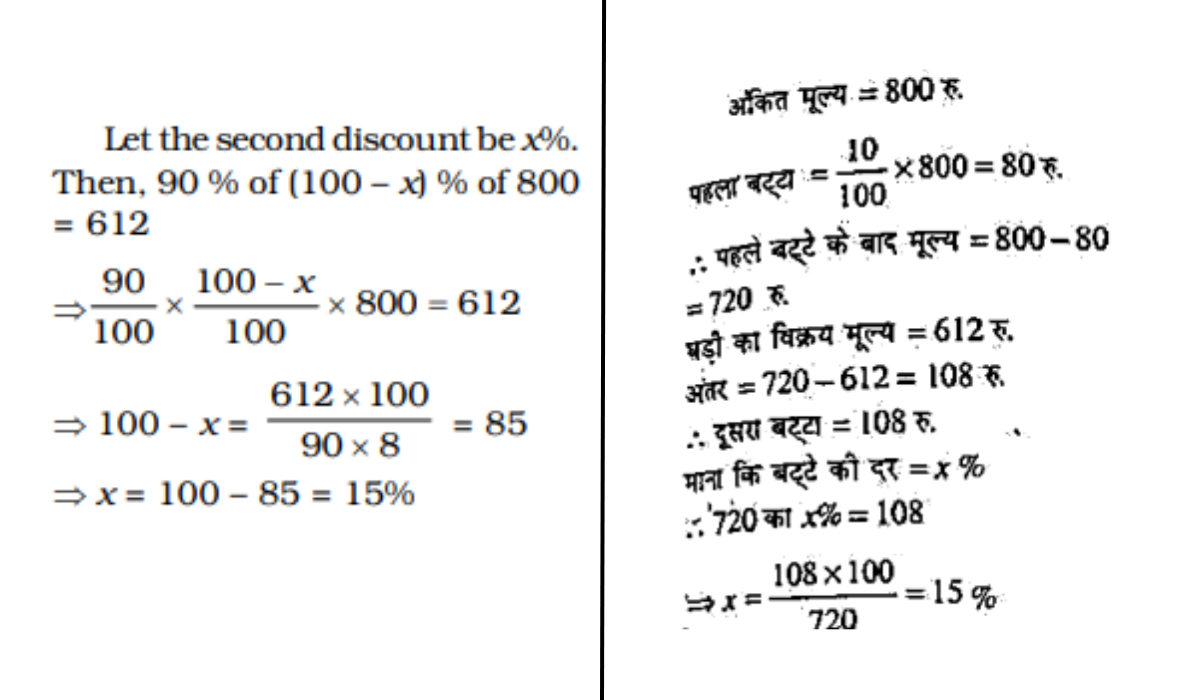Maths Practice Question and Answer
8 Q: The marked price of a T.V. is ₹16,000. After two successive discounts it is sold for ₹11,400. If the first discount is 5%, then the rate of second discount is
947 0643e8b5d1ce944a93eace7de
643e8b5d1ce944a93eace7de- 115%false
- 220%false
- 330%false
- 425%true
- Show AnswerHide Answer
- Workspace
- SingleChoice
Answer : 4. "25% "
Explanation :
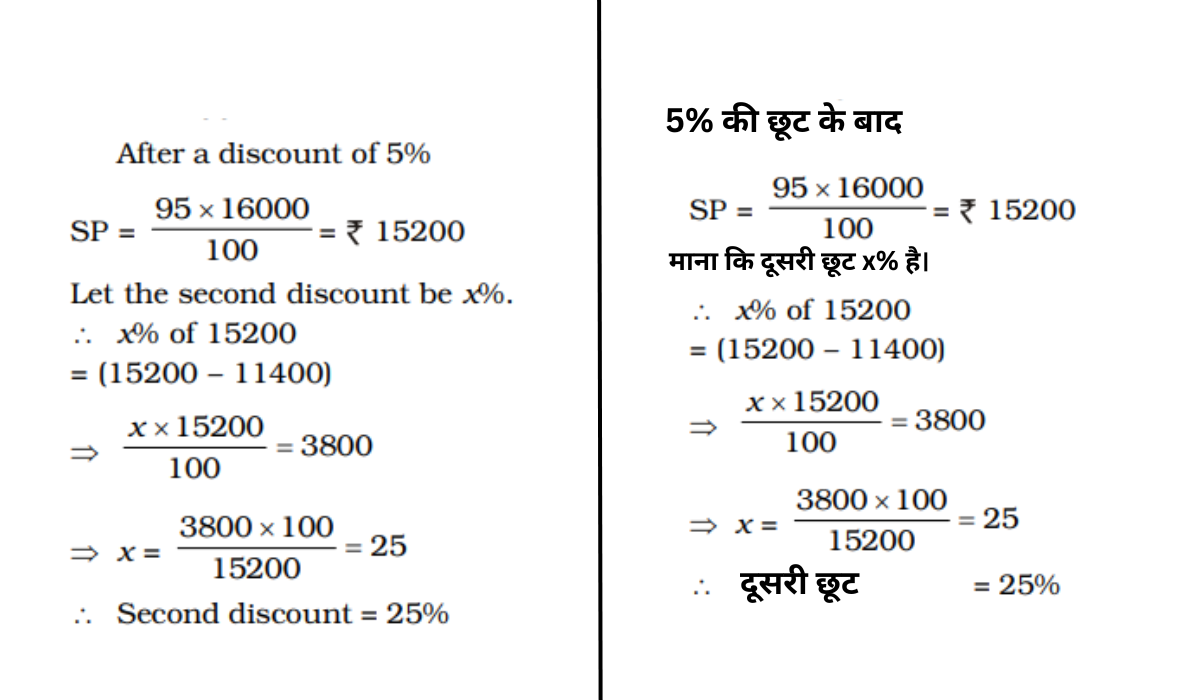
Q: A bicycle, marked at ₹ 2,000 is sold with two successive discount of 20% and 10%. An additional discount of 5% is offered for cash payment. The selling price of the bicycle at cash payment is
794 0643e77a82d621da1169a2afb
643e77a82d621da1169a2afb- 1₹1,368true
- 2₹1,468false
- 3₹ 1,568false
- 4₹1,668false
- Show AnswerHide Answer
- Workspace
- SingleChoice
Answer : 1. "₹1,368 "
Explanation :
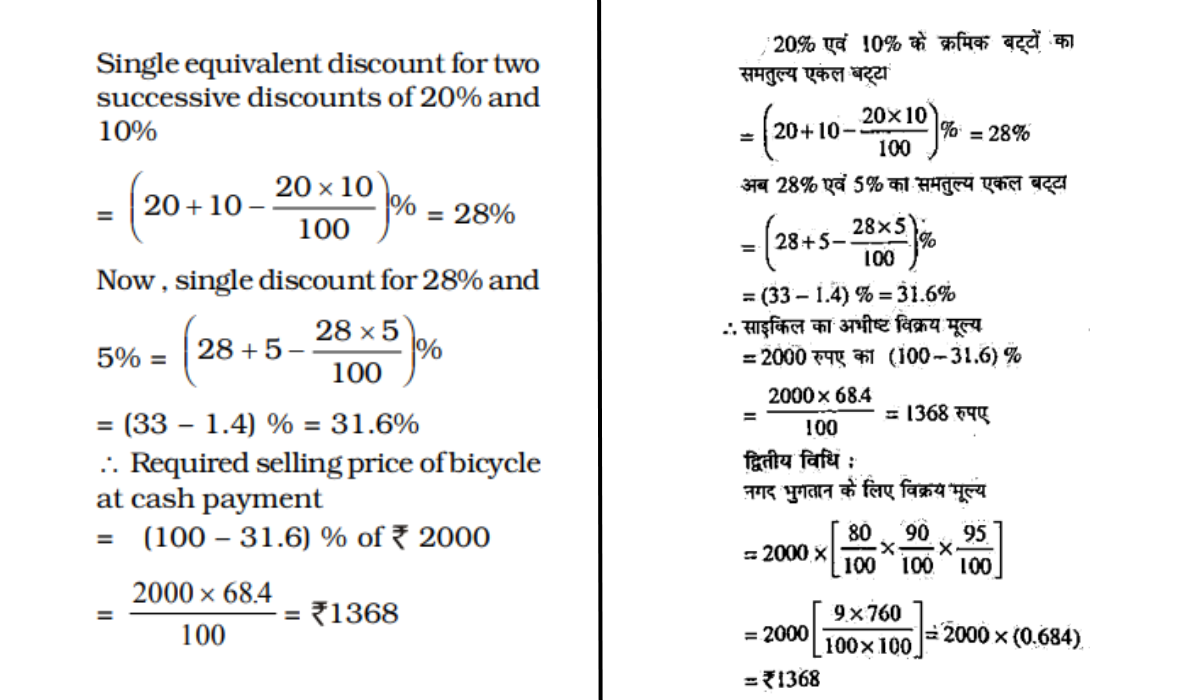
Q: An article listed at 800 is sold at successive discounts of 25 % and 15 %. The buyer desires to sell it off at a profit of 20 % after allowing a 10 % discount. What would be his list price?
1398 05ef152e38022cc4acbbe1687
5ef152e38022cc4acbbe1687- 1₹ 640false
- 2₹ 680true
- 3₹ 620false
- 4₹ 600false
- Show AnswerHide Answer
- Workspace
- SingleChoice
Answer : 2. "₹ 680 "
Explanation :
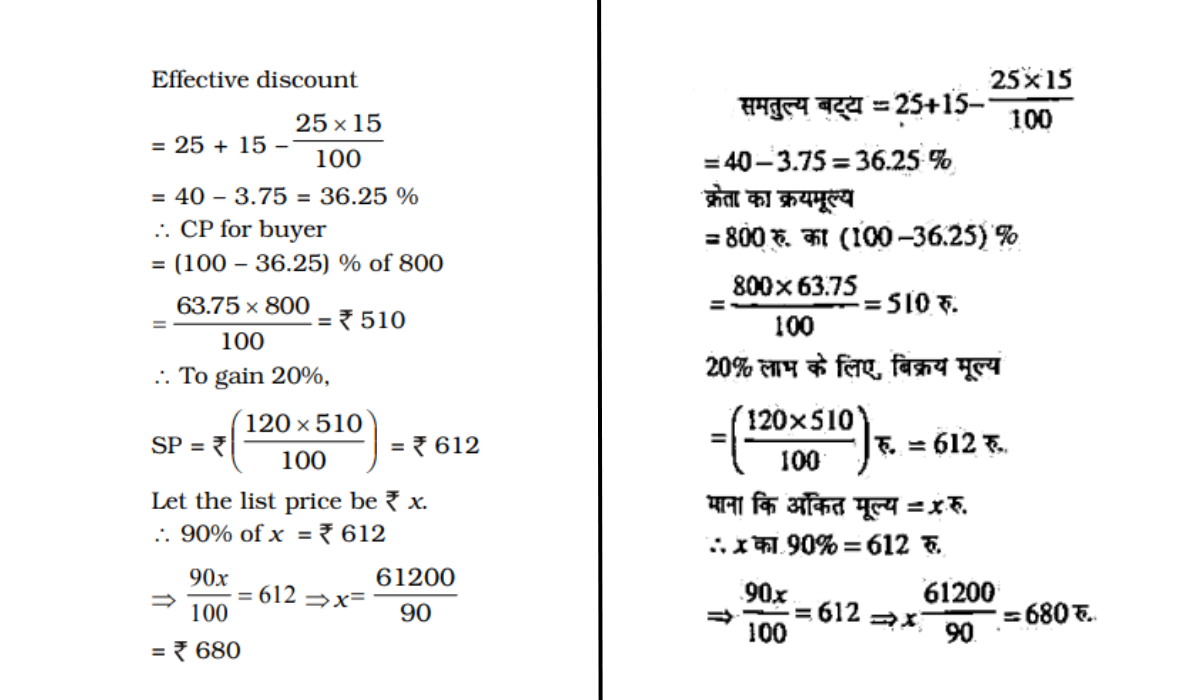
Q: A dealer buys a car listed at 200000 at successive discounts of 5% and 10%. If he sells the car for 179550, then his profit is
724 0624d5739e6c50b4b29d6ef60
624d5739e6c50b4b29d6ef60- 15%true
- 24%false
- 310%false
- 49%false
- Show AnswerHide Answer
- Workspace
- SingleChoice
Answer : 1. "5% "
Explanation :
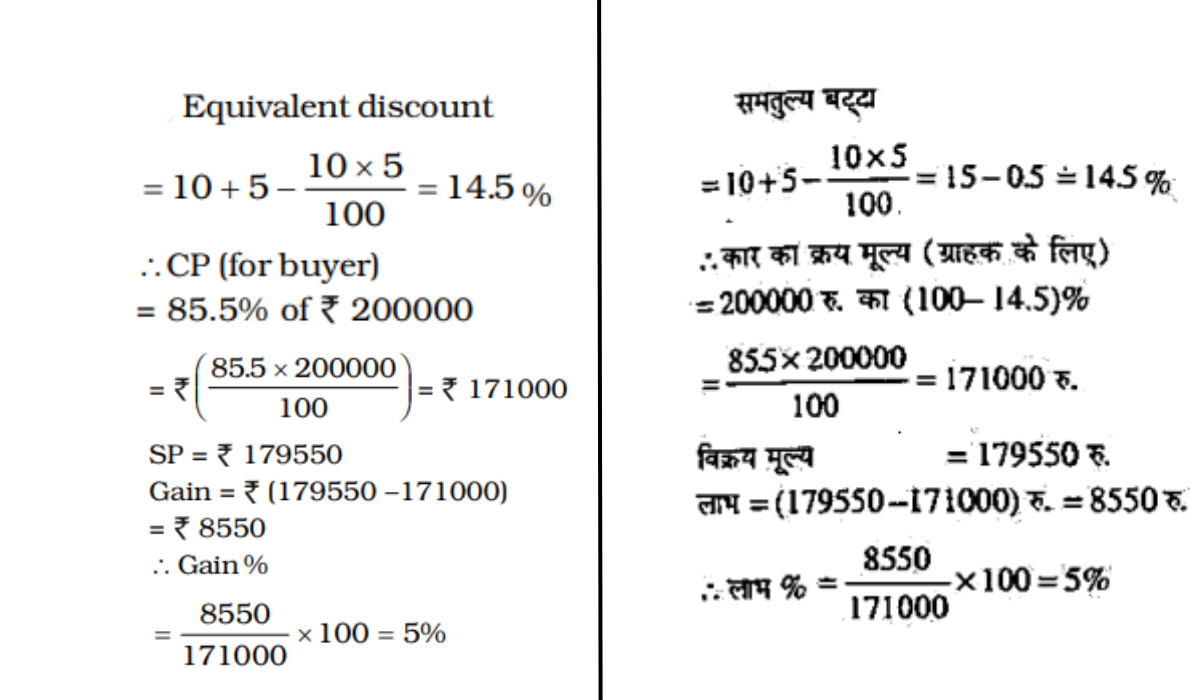
Q: A company offers three types of successive discounts: (i) 25% and 15%, (ii) 30% and 10%, (iii) 35% and 5%. Which offer is the best for a customer?
762 0624d55f067b2505d7e56f709
624d55f067b2505d7e56f709- 1First offerfalse
- 2Second offerfalse
- 3Third offertrue
- 4Any one; all are equally goodfalse
- Show AnswerHide Answer
- Workspace
- SingleChoice
Answer : 3. "Third offer "
Explanation :
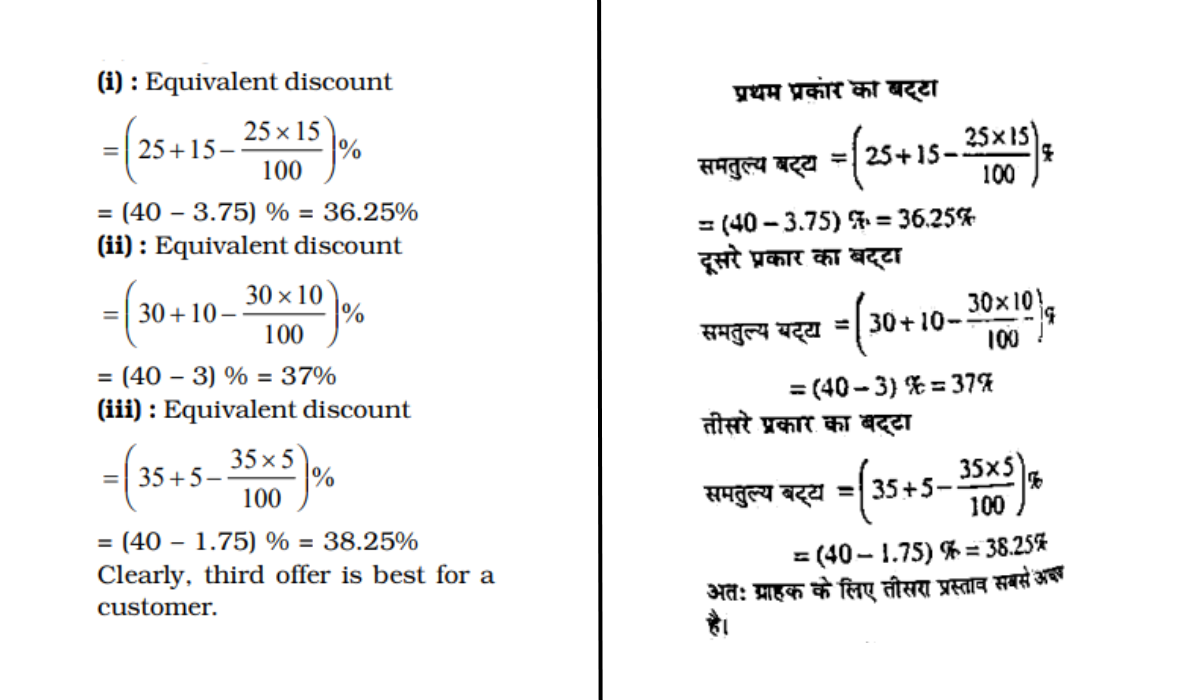
Q: A shopkeeper gives two successive discounts on an article marked ₹ 450. The first discount given is 10 percent. If the customer pays 344.25 for the article, the second discount given is
2259 05ee359682bf4c404464ac299
5ee359682bf4c404464ac299- 114 %false
- 210 %false
- 312 %false
- 415 %true
- Show AnswerHide Answer
- Workspace
- SingleChoice
Answer : 4. "15 %"
Explanation :
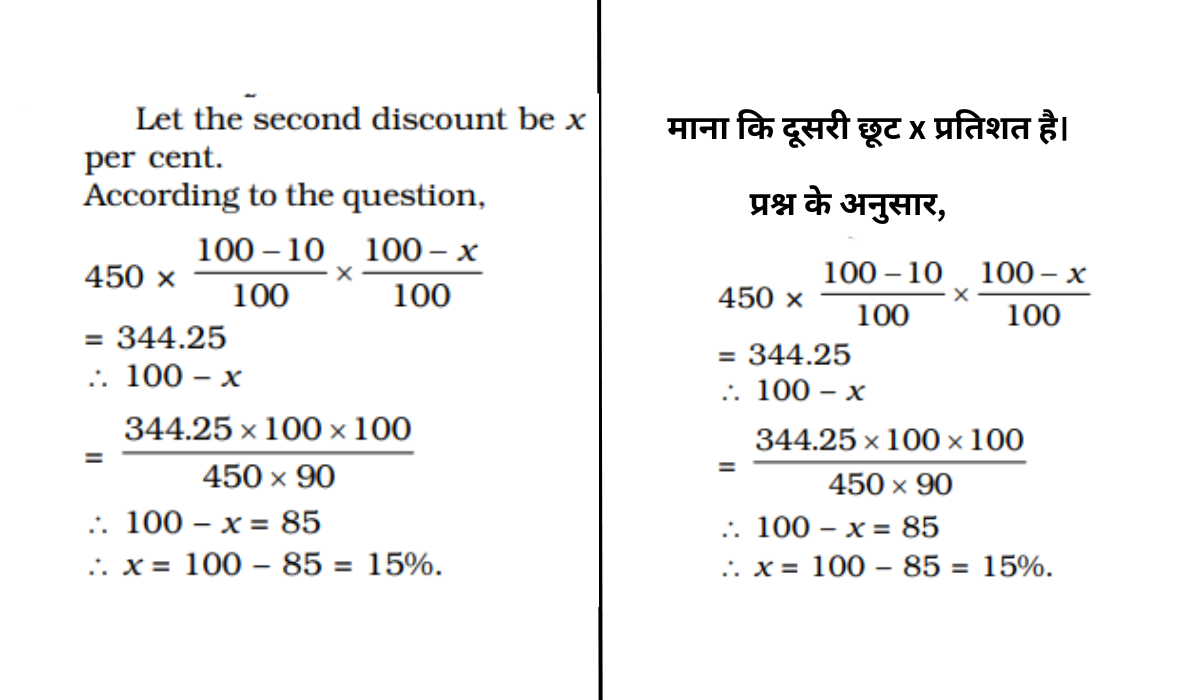
Q: The term ‘cabinet' is mentioned in which of the following article of the constitution?
2279 05dc15a4c96420169a01fef41
5dc15a4c96420169a01fef41- 1Article - 74false
- 2Article - 75false
- 3Article - 352true
- 4Not mentionedfalse
- Show AnswerHide Answer
- Workspace
- SingleChoice
Answer : 3. "Article - 352 "
Explanation :
The word 'Cabinet' is mentioned only once in the Indian Constitution in Article 352(3) which states that "the President shall not issue a proclamation unless the Union Cabinet communicates him in writing that such a proclamation may be issued".
Q: The marked price of a watch is 800. A shopkeeper gives two successive discounts and sells the watch at 612. If the first discount is 10%, the second discount is:
800 0624d54686dc29f5ccd0e76a8
624d54686dc29f5ccd0e76a8- 115%true
- 220%false
- 310%false
- 412%false
- Show AnswerHide Answer
- Workspace
- SingleChoice
Answer : 1. "15% "
Explanation :
